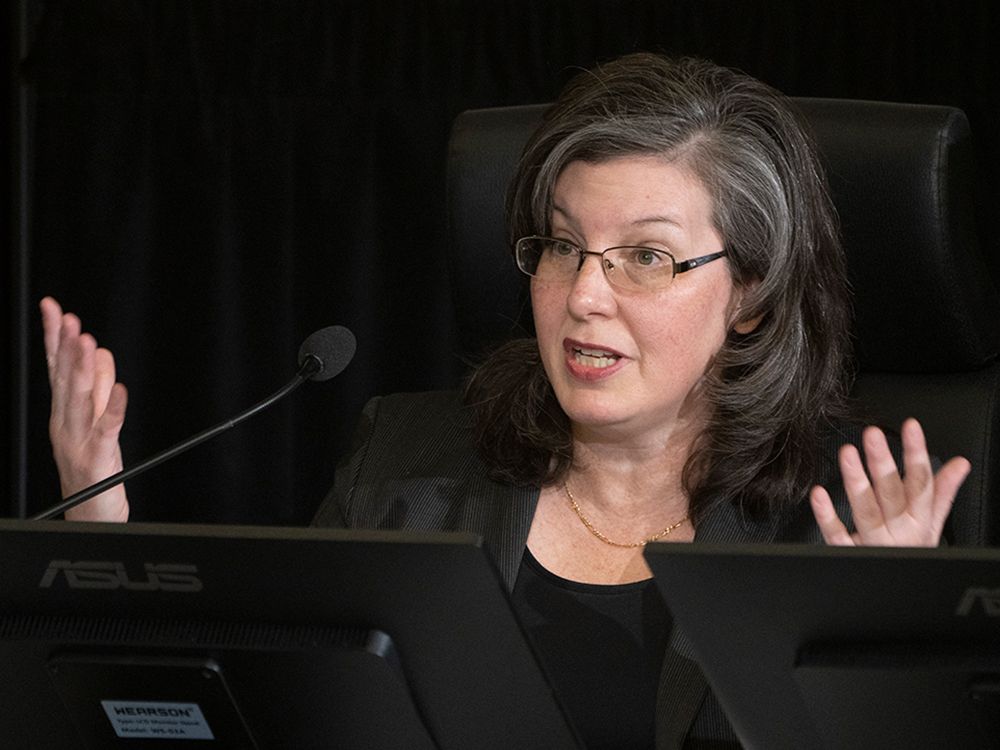
OTTAWA — After 10 years of constant growth, the federal government now says there are too many senior executives in the public service, slowing productivity and creating workplace conflicts.
In an internal memo Wednesday obtained by National Post, the federal Chief Human Resources Officer Jacqueline Bogden is clear: there are more assistant deputy ministers (421) in the bureaucracy than permanent positions at that level (355).
Now, the top human resources official says her office will be cracking down on the overage, an exceptional move after years of substantial growth of the federal public service.
Bogden said just the assistant deputy minister (ADM) — the second highest ranking position in most departments — cadre ballooned by 50 per cent (or 140) since 2015.
“There is a need to take additional proactive measures to address the ADM overage situation and contain future growth of the ADM cadre,” Bogden wrote.
An ADM’s salary can range from $197,774 to $260,719 depending on their years of experience as well as their pay classification,
according to the government’s website
.
Bogden’s memo says her office is implementing two new measures until the end of the year to address the overage.
The first aims to reduce the number of ADMs by reviewing existing positions, particularly “higher risk” situations where the senior executive is on a temporary assignment with no subsequent permanent position.
The memo does not say if those positions will be demoted, eliminated or transformed into permanent positions to reduce the “overage.”
The second aims to “contain” the growth of the ADM cadre by requiring all departments to get permission from her office before promoting a new person to the position.
The internal announcement comes as Prime Minister Mark Carney’s government is asking most departments and agencies to find spending cuts worth 15 per cent by 2029.
It also comes after years of tremendous growth of the public service under Prime Minister Justin Trudeau, particularly during the COVID-19 pandemic beginning in 2020. Over his tenure, the public service grew by over 100,000, from 257,000 in 2015
, according to government data.
Though Bogden’s memo focuses on the ADM cadre, it also included a recent report by the Public Service Management Advisory Committee warning that there are too many executives overall in the public service.
In fact, nearly half of all departments in the core public service are above the recommended average number of executives, according to the committee.
“New EX jobs at all levels are created, in many cases without a significant change in the organization’s mandate. In essence, this can mean that the same pie is being sliced in smaller pieces,” reads the July 18 document titled “Enabling a Robust Assistant Deputy Minister Cadre.”
The boon, and now excess number, of senior executives has created significant risks for the public service, the committee warns, including poor performance and productivity issues.
“Dilution and duplication lead to unnecessary layers of decision making and unclear accountabilities. It slows down productivity and can create workplace conflicts,” reads the report.
The excess of ADMs compared to permanent positions also means the number of senior executives ready to move to another job “far exceeds” the number of expected vacancies to fill in 2025.
That creates “false expectations” for ADMs and “impatience” among other lower-ranking executives hoping for a promotion, warns the report.
Kevin Page, a former Parliamentary Budget Officer, said in an email that the review was useful and timely as the government embarks on a new spending review process.
“I hope one of the outputs of the review process will be a multi-year plan to manage the growth of the public service including the size of the executive group and a plan for military service people. The focus could be on productivity in the delivery of service,” said Page, now the President and CEO of the Institute of Fiscal Studies and Democracy.
But the Parliamentary Budget Officer office said earlier this month that the federal government has missed its “full-time equivalents” reduction targets four years in a row.
“For the fourth year in a row the government said: ‘don’t worry, next year we’re going to reduce the number of full-time equivalents in the federal government’ and they blew past it again,” Jason Jacques, the PBO’s director general of economic and fiscal analysis,
.
In an email to National Post, Page encouraged individual departments to publish data on executives yearly so that the public can keep the government accountable when monitoring growth in the federal bureaucracy.
“The lack of aggregation of numbers like that provided in the report on an annual basis does not allow the executive and Parliament to monitor the upward creep in the size of the public service including the growth of higher paid executives,” he told National Post.
National Post
cnardi@postmedia.com
Our website is the place for the latest breaking news, exclusive scoops, longreads and provocative commentary. Please bookmark nationalpost.com and sign up for our politics newsletter, First Reading, here.
